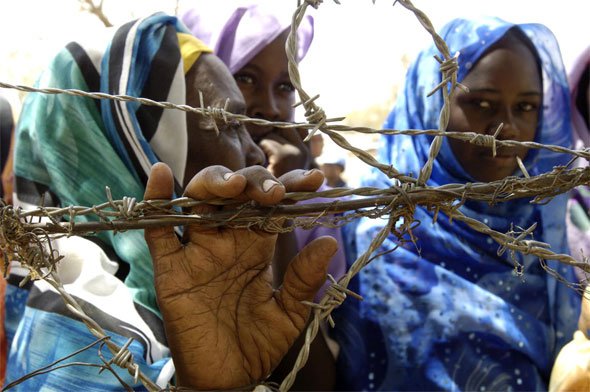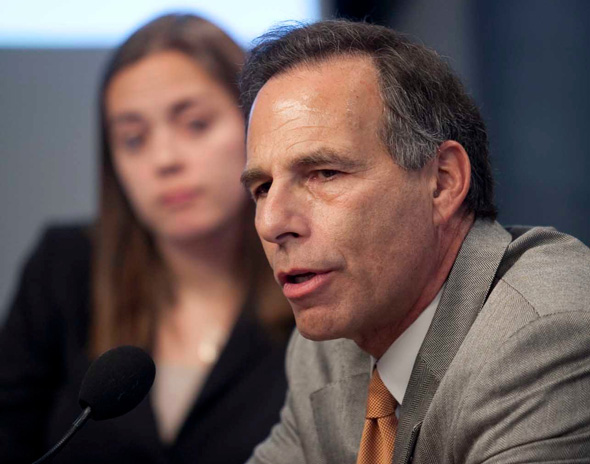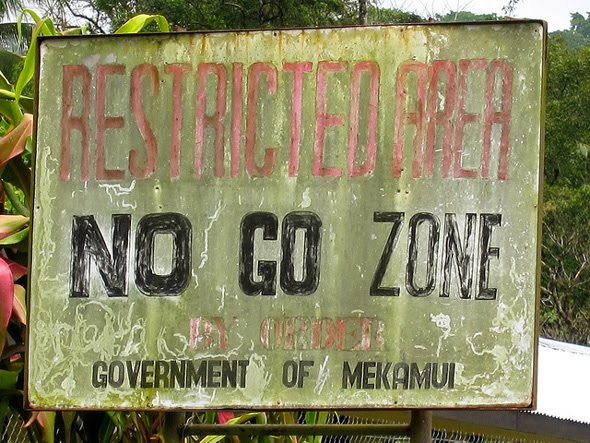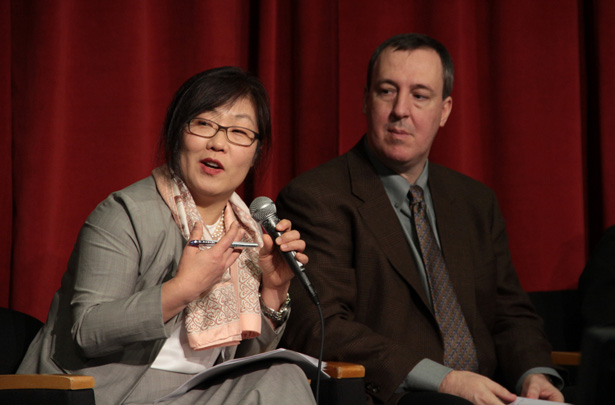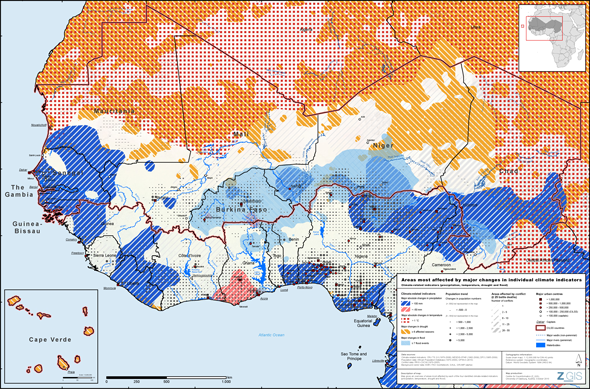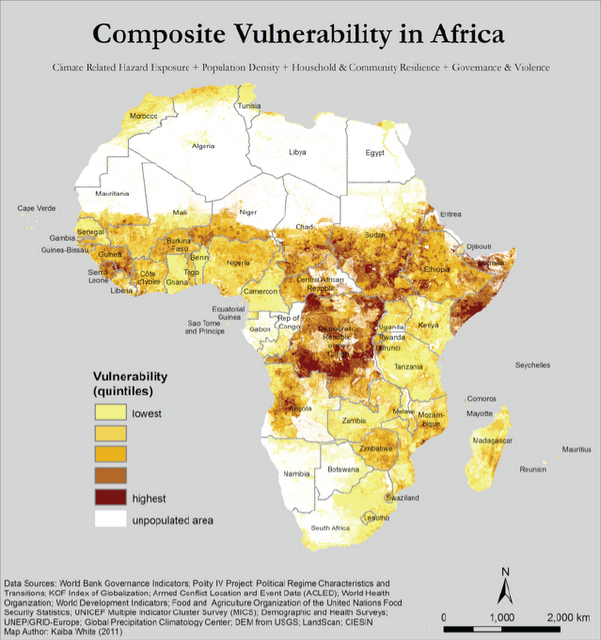-
The Ramsar Convention: A New Window for Environmental Diplomacy?
›In seeking ways to connect conservation with peacemaking, the Institute for Environmental Diplomacy and Security (IEDS) has released a study that examines an expanded role for the international wetlands treaty, the Ramsar Convention.
The Ramsar Convention: A New Window for Environmental Diplomacy? describes the wetlands convention, its place within the international environmental treaty world, and its potential to enhance environmental security during this dynamic time of increasingly insecure water supplies and climate change. With more than 40 years of work, the treaty has been quietly and effectively conserving wetlands and increasing recognition of the need to build international cooperation around them. The treaty has also helped define wetlands within greater biogeographic regions and led to formal identification of transboundary wetlands.
In the article, we set out to combine information from the convention’s 234 listed wetlands (13 of which have formal transboundary plans) with the Global Peace Index, which ranks countries using 23 indicators, such as number of conflicts, conflict deaths, military expenditures, and relations with neighboring countries. The result is a prioritized list of countries most in need of tools of conflict resolution.
Working within the framework of the convention builds capacity between high-conflict-risk nations and has potential to develop otherwise-difficult-to-establish trust because the process is transparent and all stakeholder voices are heard. This can be important even when the existing conflict has nothing to do with international wetlands.
The convention is active in many countries with ongoing conflicts, such as Afghanistan, the Democratic Republic of the Congo, Iran, Iraq, and Sudan, and efforts there may help inform the ongoing debate as to the efficacy of conservation as a tool for peacemaking.
As environmental conditions continue to evolve rapidly, the need for institutions that can work in the transboundary environment will increase. The established international infrastructure of the convention has the potential to be a greater force in peacemaking. Further research may help focus on the strengths and weaknesses of the current system and reveal ways for more effective peacemaking efforts.
Suggestions for ways to enhance the convention’s role in environmental diplomacy include working more closely with researchers and practitioners directly involved in the environmental peacemaking field, increased focus on developing capacity for increased flexibility to react to dynamic conditions, and more active promotion of formal transboundary agreements.
Pamela Griffin is an independent scholar at IEDS where she focuses on the diplomatic potential of transboundary wetlands. -
Taking a Livelihoods Approach to Understanding Environmental Security
›February 17, 2012 // By Kate DiamondSince the concept of “environmental security” first gained traction in the early 1990s, research on the issue has been overwhelmingly focused on how environmental change impacts state security. That has been to the detriment of policymakers trying to preempt instability and conflict, according to the University of Toronto’s Tom Deligiannis in his article, “The Evolution of Environment-Conflict Research: Toward a Livelihood Framework,” published in February’s Global Environmental Politics.
-
Political Demography: How Population Changes Are Reshaping International Security and National Politics (Book Launch)
›
“The world’s population is changing in ways that are historically unprecedented,” said Jack Goldstone, George Mason University professor and co-editor of the new book, Political Demography: How Population Changes Are Reshaping International Security and National Politics. [Video Below]
-
Papua New Guinea Youth Conflict Study Reveals Effects of Civil War on Young Men
›Demographic security is fast becoming a central concept in discussions about the relationship between youth and violence, and, although quantitative work has been the normal mode of research in the field, recent evidence from Papua New Guinea’s autonomous region of Bougainville shows the value of understanding local-level nuance.
Policies to support youth in post-conflict situations are important for building peace, particularly given the “youth bulge” thesis that suggests that large cohorts of marginalized young people are contributing to a demographic “arc of instability” across the developing world. However, the statistical evidence showing correlations between youth bulges and an increased risk of instability has been criticized for failing to account for the agency of youth themselves. For instance, Marc Sommers points out that there is “scant information on how and why most marginalized African youth resist engagement in violence even when it would seem to provide immediate benefits.” This lack of detailed, evidence-based knowledge can frustrate efforts to develop effective youth policies, particularly in post-conflict settings, where the risk of the persistence or even return of violence, is arguably increased by the presence of youth bulges.
Bougainville’s “Crisis Generation”
Hoping to address this lack of knowledge about how and why young people engage in peace or violence in post-conflict settings, I recently spent several weeks in Bougainville. My aim was to study how young men make lives for themselves in the social circumstances that exist nine years on from a civil war that lasted more than a decade and claimed more lives than any Pacific conflict since World War II. The qualitative evidence I collected on these pathways informed analysis in an article co-authored with Jon Barnett in the Journal of Political Geography, “Localising Peace: The Young Men of Bougainville’s ‘Crisis Generation’” (subscription required).
With a 2010 median age of just 20.4 years (projected to remain less than 25 until at least 2030) and more than 60 percent of its population less than 30 years old, Papua New Guinea is among the world’s youngest states, according to UN population data. Despite a wealth of natural resources, the state faces severe challenges to providing education, jobs, and security for a young population whose growth has for many years severely outpaced the capacity of its formal institutions. Papua New Guinea, and the region of Bougainville within it, is a state where demographic strains are reasonably expected to continue to pose risks to an already fragile state.
Bougainville’s 18-to-30-year olds, known among their peers and elders as the “crisis generation,” are those with living memory of the violence but who were too young to have fought on either side. They continue to face challenges with trauma, accessing education and work, achieving social standing, and escaping from histories of violence. These sometimes impede their capacity to participate meaningfully in local society and can lead them towards sporadic acts of violence.
Understanding the Pathways to Violence
For many young men in Bougainville, achieving critical social measures of success – such as amassing the wealth required for marriage – has become nearly impossible due to high unemployment and restricted access to education. Marriage matters, since land rights in Bougainvillean societies are generally derived matrilineally, and therefore young men who are unable to marry tend to lack secure access to land.
Education is a critical institution for young men in Bougainville. Unfortunately, the formal sector that might employ young men upon completing secondary education is very small, and therefore much of the time and money spent pursuing that education is wasted. The education system itself lacks the resources to meet the needs of all those who seek secondary education. To cope with the demand, youth are asked to sit for exams in grade 8 and again in grade 10, a practice which creates high failure rates and whittles down the student cohort from several thousand at primary level to only a few hundred at the completion of secondary schooling (few of whom then receive meaningful employment). For many, this failure to obtain a return on years of school fees places significant strain on the relationships between youth and their familial and social networks.
Some adapt to these challenges by “upgrading” their poor education through distance learning or by seeking out vocational training as a way to obtain skills relevant for rural life. But some are seen as wedged between a set of unworkable options: “Many of them are existing in a vacuum,” said one civil society leader. “They see things outside but they cannot grab them and they cannot ground themselves.”
As a result, many turn to homebrew alcohol and marijuana and a select few seek social standing by adopting displays and acts of violence that imitate the personas of former rebels. Of these choices, the first attracts the stigma of “lazy,” and the second, “dangerous.” In both cases, these stigmas risk overshadowing the legitimate challenges facing young men by distilling the complexity of the world into a simple morality crisis that itself creates divides both between and within generations.
Building Policy Prescriptions
Unfortunately, the sorts of life and trauma counseling services capable of engaging these young men remain under-supported. As one youth worker claimed of the youth who have no memory of life before the war, “They don’t know how it was before the Crisis. They think things have always been this way; that this is normal.”
In a more southern district, one young man explained of his more notorious peers, “It’s these guys roaming around, mixing with ladies and drinking, they cannot reason so they use the gun, the knife – offensive weapons. And when they are sober they regret. These people spoil the peace process here in Bougainville.”
Providing viable alternatives to these lifestyles is crucial and can only be achieved by asking young men themselves about their world, about the challenges they face, and about the strategies they take to maneuver through them. By understanding the social, cultural, and geographical specifics of a local context, this form of analysis provides a valuable starting point for determining and evaluating policy interventions that statistics alone cannot provide.
In Bougainville’s case, an expansion of vocational training and the provision of trauma counseling, regardless of whether a person was a combatant or not, are two desperately needed interventions that have the potential to increase the capacity of young men to achieve success through peaceful means.
Sources: Conciliation Resources, The Sydney Morning Herald, UN Population Division.
Photo Credit: “Mekamui/Panguna” and crossing from Buka to Bougainville, courtesy of flickr user madlemurs. -
Paul Francis, Deirdre LaPin, and Paula Rossiasco for the Africa Program
Securing Development and Peace in the Niger Delta: A Social and Conflict Analysis for Change
›Excerpted below is the introduction by Steve McDonald. The full report is available for download from the Wilson Center’s Africa Program.
This study, Securing Development and Peace in the Niger Delta: A Social and Conflict Analysis for Change, draws together a vast range of information about Nigeria’s delta region not previously available in a single publication. It richly illuminates the social history and underlying causes of unrest in the area. Equally important, the study adds to the empirical research available to us about conflict prevention and approaches to post-conflict reconstruction in regions harmed by the extraction of natural resources.
It examines the complex interactions between the social, political, economic, environmental, and security factors that drive and sustain conflict. It also reviews the main policy responses and initiatives that have already been brought to bear in the delta and maps out key policy options for the future.
Encouragingly, the study finds that many of the elements of sustainable pathways to development and peace already exist or can readily be realized. What is needed is a systematic framework and, most critically, a leadership consensus and the political will to marshal them. Nigeria’s development partners are already showing a renewed commitment to support solutions to the delta’s challenges. Imaginative dialogue and partnership between them and with critical stakeholders in government, the private sector, civil society, and communities holds the promise of yielding effective strategies for sustainable development and peace that befit the region’s unique character and history.
This study, then, emerges at a time of particular opportunity and hope. And yet it must be noted that the present time also holds a considerable potential risk. Without appropriate and thoughtful action, the legitimate aspirations of the citizens of the delta and their compatriots in Nigeria as a whole will, yet again, go unrewarded. For the Niger Delta today, any plan or project must be rooted in practical and active understanding of the origins and risks of conflict in order to sustain the momentum of peaceful development and avoid planning that does not take into account the dynamics of conflict and its core causes.
Finally, the importance of the issues dealt with in this study extends beyond the delta or Nigeria as a nation. They are much broader when viewed from Nigeria’s place in the sub-region and the world economy. While the delta is unique, there are also lessons that can be learned for other conflict situations, and especially for the expanding number of new oil producing countries along the Guinea coast. For all, the key lesson is that peace is hard work. It requires a leadership committed to equitable government, dialogue with citizens, and sustainable development.
Download the full report from the Wilson Center. -
Move Beyond “Water Wars” to Fulfill Water’s Peacebuilding Potential, Says NCSE Panel
›January 26, 2012 // By Schuyler NullOne of the best talks of last week’s NCSE Environment and Security Conference was thewater security plenary on Friday. Moderator Aaron Salzberg, who is the special coordinator for water resources at the Department of State, led with a provocative question: how many in attendance think there will be war over water in the future?
-
UNEP Maps Conflict, Migration, Environmental Vulnerability in the Sahel
›A new set of maps from the United Nations Environment Programme (UNEP) identifies “climate hotspots” – areas vulnerable to instability exacerbated by climate change – in 17 sub-Saharan countries in and bordering the Sahel region. The maps reflect the fact that, more often than not, the impact of climate change on local populations is compounded by changes in migration, conflict, or both. According to Livelihood Security: Climate Change, Migration and Conflict in the Sahel, the UNEP report accompanying the maps, understanding “the exacerbating effect of changes in climate on population dynamics and conflict in the region” will be essential to developing successful adaptation strategies throughout the region.
UNEP’s maps analyze 40 years of data to pinpoint where the region’s most at-risk populations are located based on environmental, population, and conflict trends dating back to 1970. In a single map pinpointing the Sahel’s 19 hotspots, UNEP synthesizes subnational data from four environmental indicators over time – rainfall (from 1970 to 2006), temperature changes (1970 to 2006), drought (1982 to 2009), and flooding (1985 to 2009) – which are then layered on top of population trends (1970 to 2010) and conflict data (1970 to 2005) in order to identify the region’s most insecure areas.
Composite Vulnerability
At first glance, the map can appear hard to decipher; it is flooded with different colors and symbols, each indicating something different about the extent of climate change, migration, and conflict in the region. A Google Earth version of the map (available for download here) makes all this information easier to process by allowing users to select which indicators they want to see mapped out, cutting back on the number of lines, dots, colors, and pie charts the user has to decode.
Given the vast amount of the information being condensed into these maps, the report is a helpful and worthwhile read. For instance, eight hotspots are in places with growing populations and another seven are located in places that have experienced conflict; altogether, 4 of the 19 hotspots have both past conflict and growing populations. The report digs deeper into the confluence of climate, conflict, and migration by discussing case studies that highlight how the three intersect in local communities (at the same time, the report is careful to avoid suggesting that there is a causal relationship between the three issues.). In Niger, Nigeria, and Chad, for example, tensions have been mounting between northern pastoralists and southern farmers as each group has moved further and further afield in search of water and arable land to sustain their livelihoods.
Holes In the Data
While the hotspot maps include a wealth of information, the report makes clear that it is by no means exhaustive. Rising sea levels are, for instance, a major impending threat to coastal populations in the Sahel, but only the downloadable Google Earth map – not the hotspot map in the report or the Google Earth map as presented online – incorporates this factor. Compounded with a skyrocketing population in the coastal areas – the coast between Accra and the Niger delta is expected to be “an urban megalopolis of 50 million people” by 2020, according to the report – an increase in sea levels could have a huge impact on the region’s stability.
The report also readily admits that the datasets for population trends and conflict have shortcomings. Population data is largely based on censuses, which both the report and its data sources (UNEP’s African Population Database and the Gridded Population of the World, version 3) acknowledge can be inconsistent in their accuracy. Additionally, after 2000, population data is based on projections rather than estimates, which, as last year’s update from the UN Population Division showed, have often proven inaccurate, particularly in sub-Saharan Africa.
Regarding conflict, the UNEP report is straightforward in admitting its limits. The report lacks data on small-scale conflict (fewer than 25 battle deaths, following the Uppsala Conflict Data Program’s threshold that separates conflicts from lower-level violence), even as it acknowledges that such conflict is “often the first to occur” when climate change threatens communities’ access to resources and livelihoods.
Ultimately, however, these maps give valuable data on specific locations that are uniquely vulnerable to trends in population, climate, migration, and conflict. They add focus to the conventional wisdom that climate change will impact the region’s stability, and, taken together, the maps and the report provide a valuable resource for scholars and policymakers attempting to craft adaptation policies that take into consideration these complex links.
Sources: Socioeconomic Data and Applications Center at Columbia University’s Earth Institute, UNEP, Uppsala Conflict Data Program.
Image Credit: UNEP. -
New Research on Climate and Conflict Links Shows Challenges for the Field
›
“We know that there will be more conflicts in the future as a result of climate change than there would have been in a hypothetic world without climate change,” said Marc Levy, deputy director of the Center for International Earth Science Information Network (CIESIN) at Columbia University’s Earth Institute, although existing data and methodologies cannot predict how many additional conflicts there will be, or which causal factors will matter most. [Video Below]
Showing posts from category conflict.


